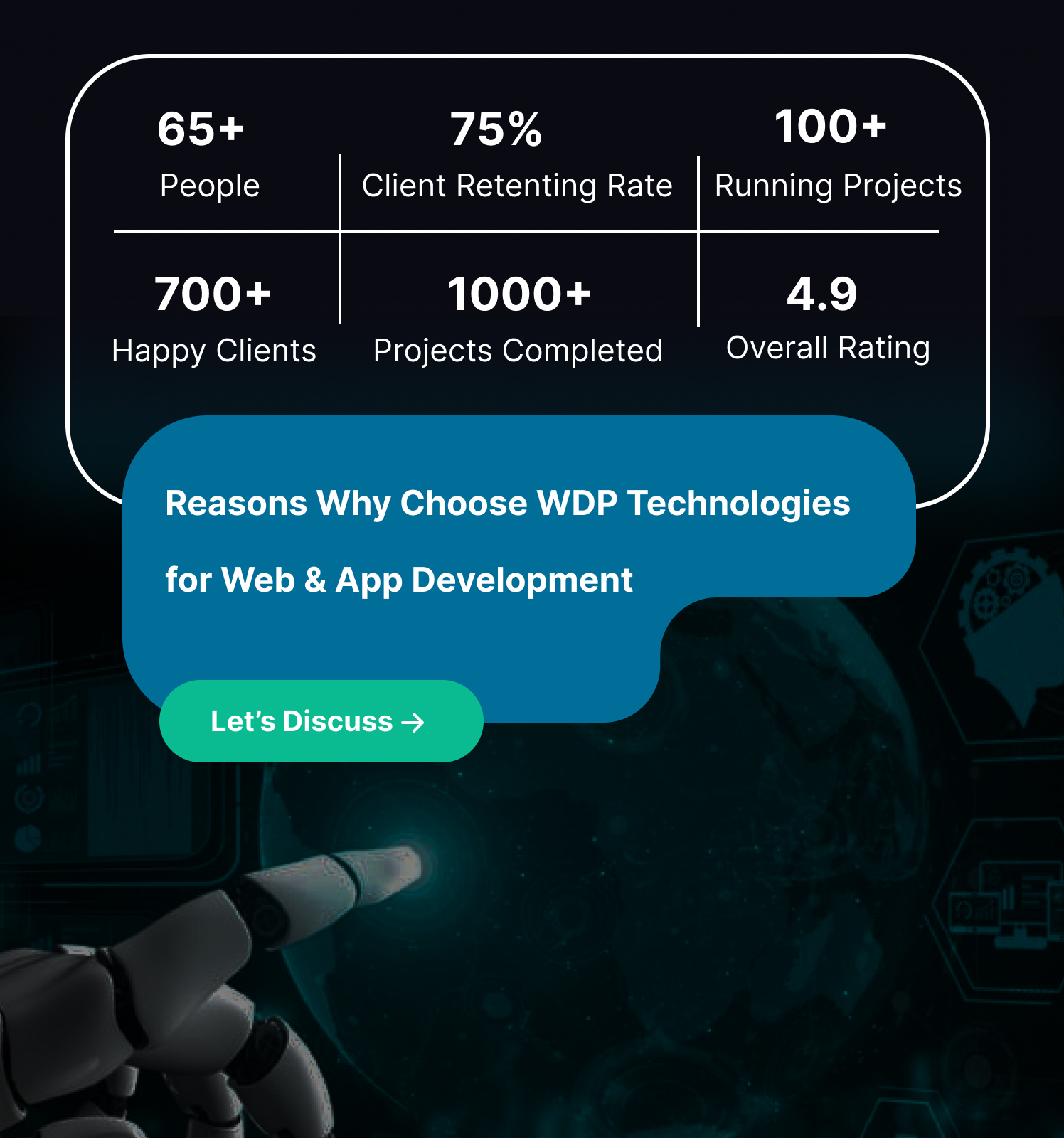Low-code development platforms are a type of software that allows developers to create applications using visual programming and pre-built connectors, rather than writing code from scratch. Traditional development, on the other hand, involves writing code in a programming language such as Java or Python.
Low-code developments have become more popular in terms of software development when it comes to developing custom applications. The main purpose here is to improve productivity and performance. Low-code development allows for speeding up development, increases ROI, and reduces developer shortages. Most organizations are implementing low code methods in their application development rather than using the traditional methods of development.
Low Code vs Traditional Development
Both low-code and traditional development have their own pros and cons, and the choice between the two depends on the specific needs and goals of a project. Here are some factors to consider when deciding which approach to take:
Time to market: Low-code platforms can often get an MVP (minimum viable product) to market much faster than traditional development, as they allow developers to quickly build and iterate on an application without having to write a lot of code.
Complexity: Low-code platforms are generally better suited to building simple, single-purpose applications, as they may not have the flexibility or scalability to handle more complex projects. Traditional development, on the other hand, can handle more complex projects due to the flexibility and control it offers.
Customizability: Low-code platforms often come with pre-built connectors and templates, which can make it easier to build an application quickly. However, they may not offer as much customization as traditional development, as they are limited by the capabilities of the platform. Traditional development, on the other hand, allows for more customization, as the developer has complete control over the code.
Coding Knowledge: in the case of low code development minimum knowledge about the languages is enough. A low code developer should have a basic coding understanding. To work with the traditional development method a developer needs to have advanced coding skills, knowledge of multiple web frameworks work, and experience in a particular framework.
Speed: Low-code development platforms provide very quick development. You can develop a low-code web app in 1-3 weeks. Traditional development methods need around 2-8 months to complete a web app according to its complexity because it requires extensive coding, multiple prototype revisions, and testing and bug fixes.
Agility: Low-code apps are comparatively more agile because you can make changes very quickly. You can release a new app and errors can be tracked and resolved immediately. In the traditional method a whole code needs to be written so, changes are very slow.
Deployment: Low-code apps can be deployed faster. But they are limited to platforms. Depending on what low-code tools you are using, you can deploy only to supported platforms. Wether in traditional web apps, you are free to deploy to any and all platforms.
Maintenance: Low-code apps are easier to maintain. When the organization makes changes in the low-code platform, your low-code web apps will be updated automatically. So you spend fewer resources on regular maintenance. Traditionally developed web apps can be hard to regularly update and maintain. You require a dedicated team to update the code every time.
Benefits Of Low-Code Development
Low-code development platforms offer a number of benefits over traditional development methods. Some of the main benefits include:
Faster development: Low-code platforms allow developers to build applications quickly by using visual programming and pre-built connectors, rather than having to write code from scratch. This can significantly reduce the time it takes to get an MVP to market.
Easier to use: Low-code platforms are generally easier to use than traditional development tools, as they use visual programming and don’t require knowledge of a specific programming language. This can make it easier for non-technical team members to contribute to the development process.
Reduced costs: Low-code development can be more cost-effective than traditional development, as it allows organizations to build applications with a smaller team and fewer resources.
Greater agility: Low-code platforms allow organizations to quickly iterate and adapt to changing business needs, as they can easily make changes to an application without having to write a lot of new code.
Improved collaboration: Low-code platforms often come with built-in collaboration features, which can make it easier for teams to work together on a project..
Disadvantages Of Low-Code Development
While low-code development has many benefits, it also has some limitations and potential drawbacks. Some of the main disadvantages of low-code development include:
Limited customization: Low-code platforms may not offer as much customization as traditional development, as they are limited by the capabilities of the platform. This can make it difficult to build highly customized or complex applications.
Lack of control: Because low-code platforms use pre-built connectors and templates, developers may have less control over the underlying code and architecture of an application. This can make it more difficult to troubleshoot issues or make certain types of customizations.
Dependence on the platform: Organizations that use low code platforms may become dependent on the platform provider for updates and support. This can be a risk if the provider goes out of business or discontinues the platform.
Lack of ownership: Because low code platforms use pre-built connectors and templates, the resulting application may not be as unique as one built from scratch. This can be an issue for organizations that want to differentiate themselves in the market.
Limited scalability: Low-code platforms may not be able to handle large or complex projects as easily as traditional development, as they may not have the same level of flexibility and scalability.
Advantages Of Traditional Development
Traditional development, also known as “full-stack” development, involves writing code in a specific programming language (such as Java or Python) to build an application from scratch. This approach has a number of benefits over low-code development:
Customization: Traditional development allows developers to have complete control over the code and architecture of an application, which can make it easier to build highly customized or complex projects.
Flexibility: Traditional development provides a high level of flexibility, as developers can choose the specific programming languages, frameworks, and tools they want to use. This can make it easier to build applications that are tailored to specific needs and goals.
Ownership: Applications built using traditional development are typically more unique and differentiated than those built using low-code platforms, as they are not limited by pre-built connectors and templates.
Scalability: Traditional development is generally more scalable than low-code development, as it allows developers to build applications that can handle large amounts of data and traffic.
Troubleshooting: Traditional development gives developers more control over the underlying code and architecture of an application, which can make it easier to troubleshoot issues that arise.
When to choose Low-Code Development?
Low-code development is a type of software development approach that involves using a visual interface and pre-built templates to create custom applications without writing a lot of code. Low-code development platforms are designed to be user-friendly and allow non-technical users to build custom applications without the need for extensive programming knowledge.
There are a few situations where low-code development might be a good choice:
When you need to build an application quickly: Low-code development can be faster than traditional development methods because you don’t have to write as much code. This can be especially useful if you need to get an application up and running in a short amount of time.
When you don’t have a lot of programming resources: If you don’t have a large team of developers, or if you don’t have a lot of programming expertise in-house, low code development can be a good way to build custom applications without having to hire additional staff or bring in outside contractors.
When you need to make frequent changes to an application: Because low code development platforms are visual and user-friendly, it can be easier to make changes to an application once it has been built. This can be useful if you need to update an application frequently or if you expect the requirements for the application to change over time.
Is low-code replacing developers?
Low-code technology is an increasingly popular way to develop applications quickly and without the need for intensive coding. However, it’s important to note that low-code is not necessarily replacing developers. It can actually provide developers with the tools they need to create complex applications faster, as well as open up new opportunities for developers to be more creative in their work. Low-code can also make it easier for non-developers to create basic applications, which can free up developers to focus more on the complex tasks involved in software development.
Conclusion
Ultimately, the choice between low code and traditional development will depend on the specific needs and goals of your project. If you need to get an MVP to market quickly and don’t require a lot of customization, a low-code platform might be the better choice. If you need more flexibility and control, or if you are building a complex application, traditional development might be a better fit.












